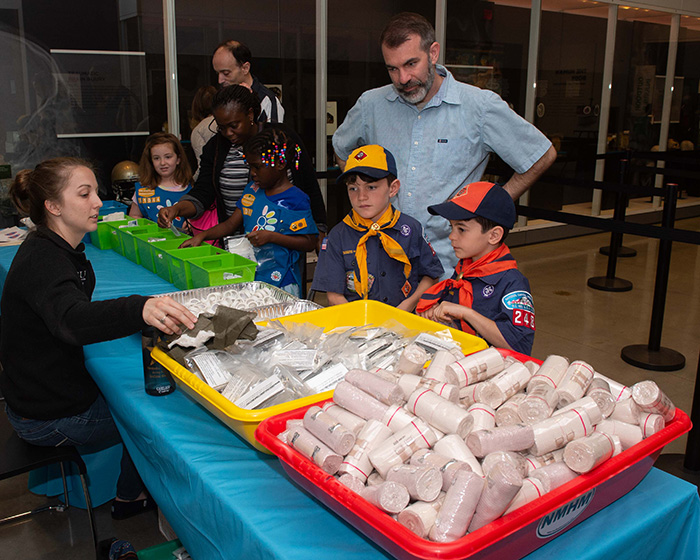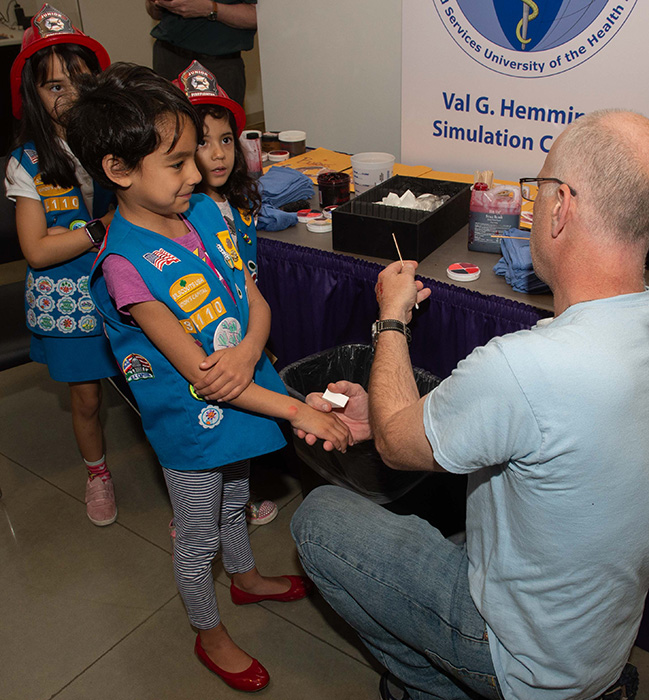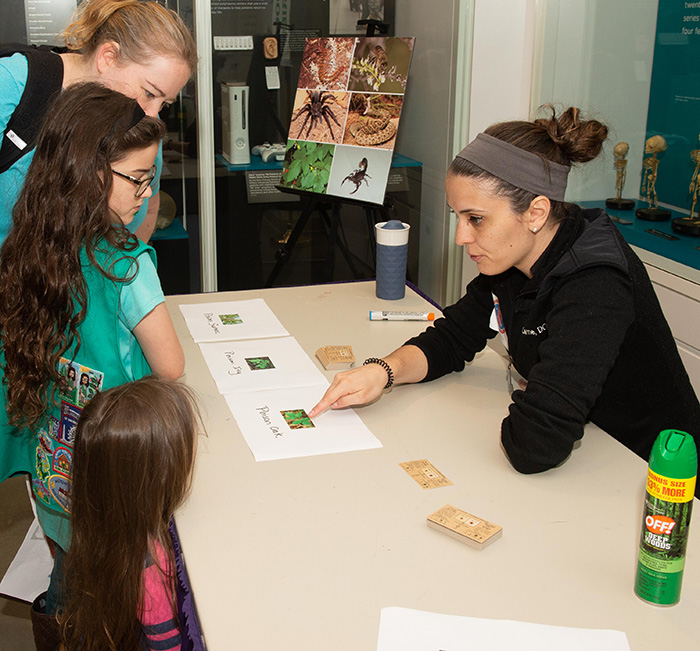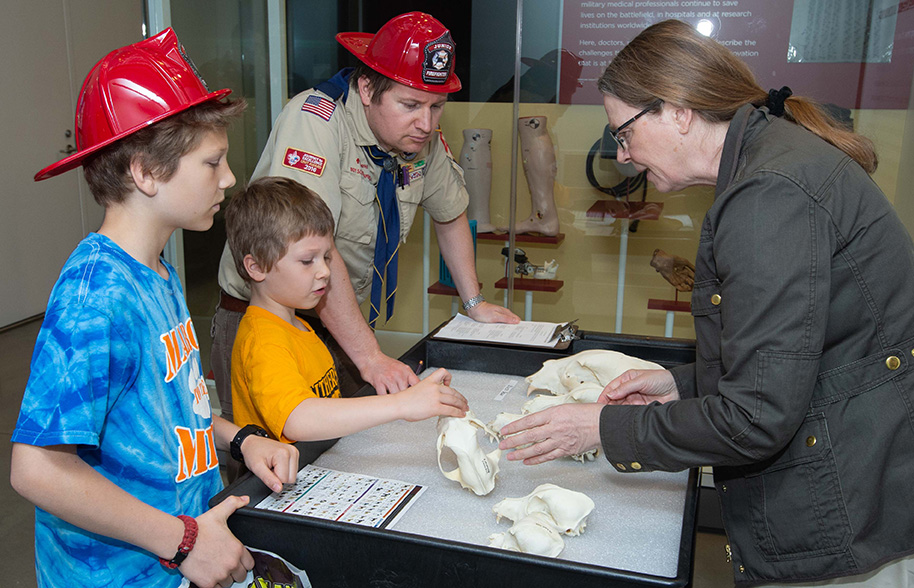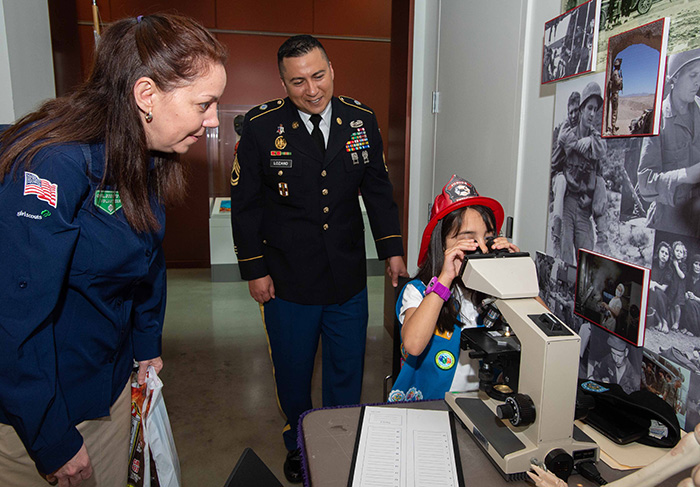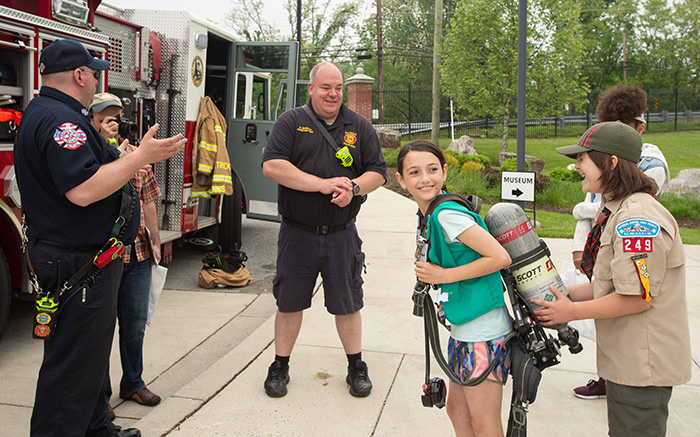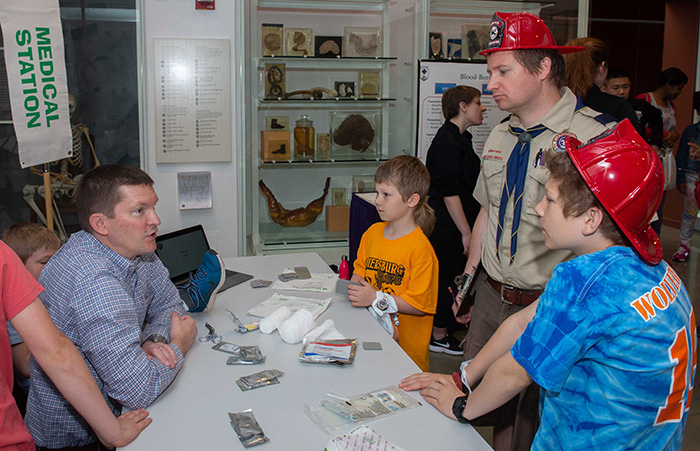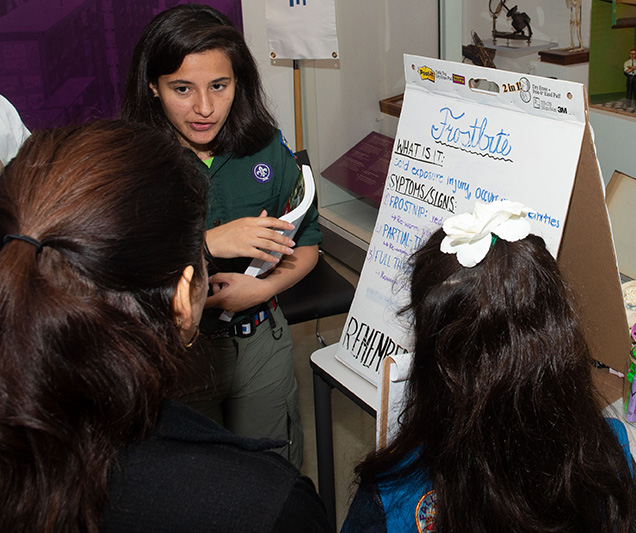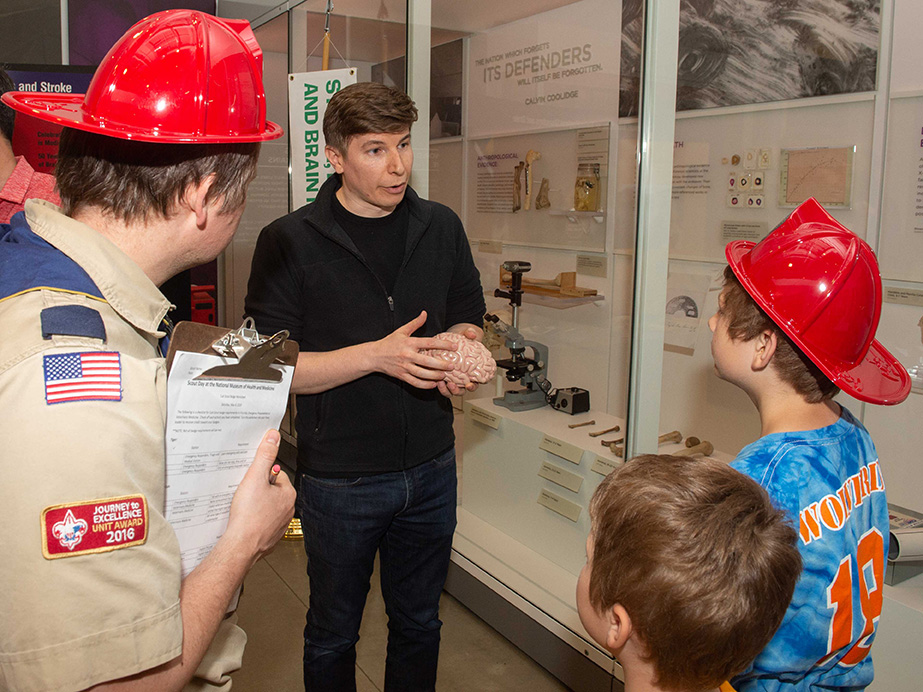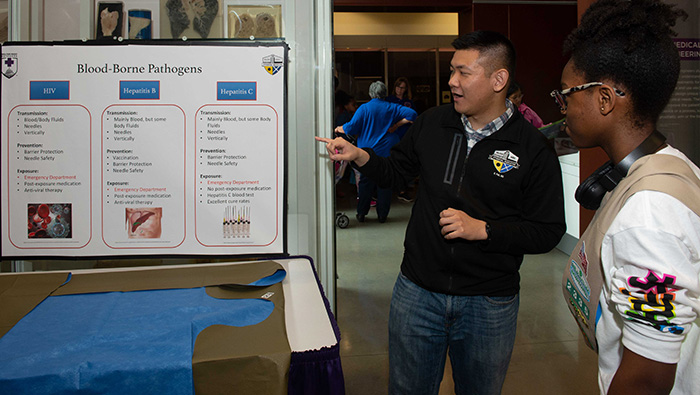Scouts Participate in a Morning of First-Aid Education at the Medical Museum
By Jacqueline Gase
NMHM Public Affairs Coordinator
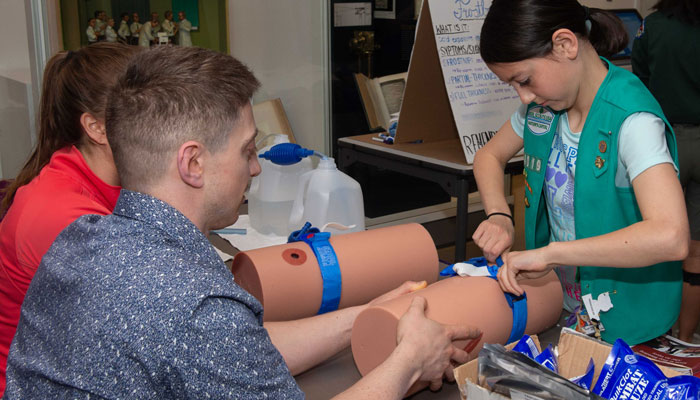
U.S. Navy Lt. Gerald Durkan from Walter Reed National Military Medical Center shows a museum visitor how to use a tourniquet during the May 4, 2019, Scout Day at the National Museum of Health and Medicine in Silver Spring, Maryland. (Department of Defense photo by Matthew Breitbart)
The National Museum of Health and Medicine provided a venue for first-aid education on May 4, 2019, for Scout Day. Boy and Girl Scouts roamed the galleries and attended tables staffed with experts in first aid and emergency response training, including representatives from Walter Reed National Military Medical Center, Forest Glen Emergency Medical Services, the Uniformed Services University Val G. Hemming Simulation Center, Joint Pathology Center, National Institute of Neurological Disorders and Stroke, and Crew 27 Venture Scouts.
Scouts participated in activities and stations that challenged their knowledge of outdoor injuries, triage, moulage, burn treatment, and more and left knowing the basics of how to assess and manage a number of medical emergencies.
At the first-aid station, Walter Reed volunteers guided the preparation of first-aid kits noting the benefits of each item. Museum visitors took home a kit that included a non-adherent pad, gauze sponges, alcohol antiseptic, medical tape, non-aspirin pain reliever, antibiotic ointment, hand sanitizer, burn cream, gloves, a first-aid bandage, and a sterile bleed dressing bandage. After compiling their first-aid kits, Scouts learned how to use the contents at the triage and outdoor injuries stations.
At the outdoor injury station, Scouts identified the differences between poison ivy, poison oak, and poison sumac and were given a tick identification card with instructions on tick removal. The Walter Reed representative also described the symptoms of and procedure for combating a severe allergic reaction with an EpiPen.
Walter Reed volunteers also described the steps to providing triage: a process of identifying and prioritizing care for the most critical injury before treatment is started. Scouts learned how to apply tourniquets based on the location of the wound and discovered that sometimes direct pressure is a better solution.
Similarly, at the medical station, Walter Reed volunteers instructed Scouts on the exposure, transmission, and prevention of bloodborne pathogens like HIV, hepatitis B, and hepatitis C, as well as how to properly bandage a burn.
As presenters discussed and demonstrated techniques of prevention and treatments for medical emergencies, the volunteers from USU provided visual aids. At the moulage station, USU volunteers applied temporary tattoos and makeup to Scouts that imitated different types of injuries, including abrasions, bruises, gunshot wounds, lacerations, stab wounds, and burns. These detailed imitations are used to train medical professionals.
Looking to animal care, a veterinary pathologist from the Joint Pathology Center discussed military working dogs and the U.S. Army Veterinary Corps. Scouts used a microscope to view slides of tumor cells taken from a service dog while learning about the thorough, semi-annual medical assessments of military animals.
As museum visitors walked to each station, they passed examples of emergency medical care used in a military medicine setting. Photographs on display showed triage stations from World War I, and a moulage kit from 1949 had materials that demonstrated the types of wounds medical service personnel might encounter on the battlefield.
"Exposing Scouts to lessons learned on the battlefield from military medical professionals provides them with lifelong skills that might save lives and could possibly influence career paths," said Andrea Schierkolk, NMHM public programs manager.
NMHM's public programs provide forums for informal learning that connect the mission of the Department of Defense museum with the public. NMHM was founded as the Army Medical Museum in 1862 and is a division of the Defense Health Agency Research and Development Directorate. For more information about upcoming events, call (301) 319-3303 or visit https://www.medicalmuseum.mil.
